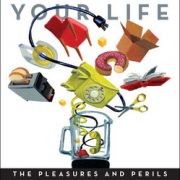Say hello to our new Affiliates

A look at the interior of the Hiller Aviation Museum
This summer, Smithsonian Affiliations was pleased to welcome three new organizations to its network of 165 Affiliate partners in 41 states, D.C., Panama and Puerto Rico. Here’s a chance to get to know them a little more–
Hiller Aviation Museum (San Carlos, CA)
Ever heard of the Black Diamond? No, it’s not a sparkling gemstone, but an airplane built by a couple of shipyard buddies in 1910. After a successful flight in 1912, the Diamond was crated and stored until 1930 when the Yuba College Aeronautical School fixed it up and displayed the airplane at the Oakland Airport. The Smithsonian National Air and Space Museum acquired it in 1948, before subsequently loaning it to the Hiller Aviation Museum for restoration. Visitors to the Hiller today can experience a piece of the Smithsonian, and America’s aviation history. Through unique aircraft collections, exhibits, and programs, the museum provides a stimulating environment with multiple ways for visitors to experience the adventure and innovation of flight and to use aviation as a portal for exploring science, history, and technology. Take a virtual walkthrough of the Hiller Aviation Museum and find out more about the Black Diamond restoration project!
Tellus: Northwest Georgia Science Museum (Cartersville, GA)
 This mining museum located just north of Atlanta just got an $18 million facelift. The Tellus: Northwest Georgia Science museum is a new version of the old museum. In fact, the old museum – all 9,000 square feet of it – could fit into just one of its four new galleries that make up the 120,000 square foot museum today. The Tellus is a museum on a mission to bring the latest research and information on current science topics to visitors from Atlanta to Chattanooga. Only recently announcing their Affiliation with the Smithsonian, the Tellus hopes to bring more artifacts to its new space through the Affiliations program and enhance their already eye-popping collection of minerals, rocks, gems and fossil specimens, and objects related to Georgia’s rich mining heritage in Cartersville and Bartow County. The museum also has artifacts related to science in motion with motorized vehicles and a recent library in the museum space.
This mining museum located just north of Atlanta just got an $18 million facelift. The Tellus: Northwest Georgia Science museum is a new version of the old museum. In fact, the old museum – all 9,000 square feet of it – could fit into just one of its four new galleries that make up the 120,000 square foot museum today. The Tellus is a museum on a mission to bring the latest research and information on current science topics to visitors from Atlanta to Chattanooga. Only recently announcing their Affiliation with the Smithsonian, the Tellus hopes to bring more artifacts to its new space through the Affiliations program and enhance their already eye-popping collection of minerals, rocks, gems and fossil specimens, and objects related to Georgia’s rich mining heritage in Cartersville and Bartow County. The museum also has artifacts related to science in motion with motorized vehicles and a recent library in the museum space.
Georgia Aquarium (Atlanta, GA)
Whale sharks, belugas, and rays. oh my! Those are just a few of more than 100,000 animals from 500+ species that can be found at the Georgia Aquarium. Looking for mystery? Visitors to the aquarium can see a giant squid specimen, on loan from the National Museum of Natural History. Recently, the VP of Guest Services at the aquarium visited NMNH and met with the Ocean Hall educators and curators to talk about collaboration ideas in the future. And, two Affiliations team members recently made the trip from Washington, D.C., to the aquarium and documented it in a recent blog. Didn’t get a chance to see it? Click here to read about their adventure and become a fan of Smithsonian in your Neighborhood, our Facebook page, to see the photo album.











